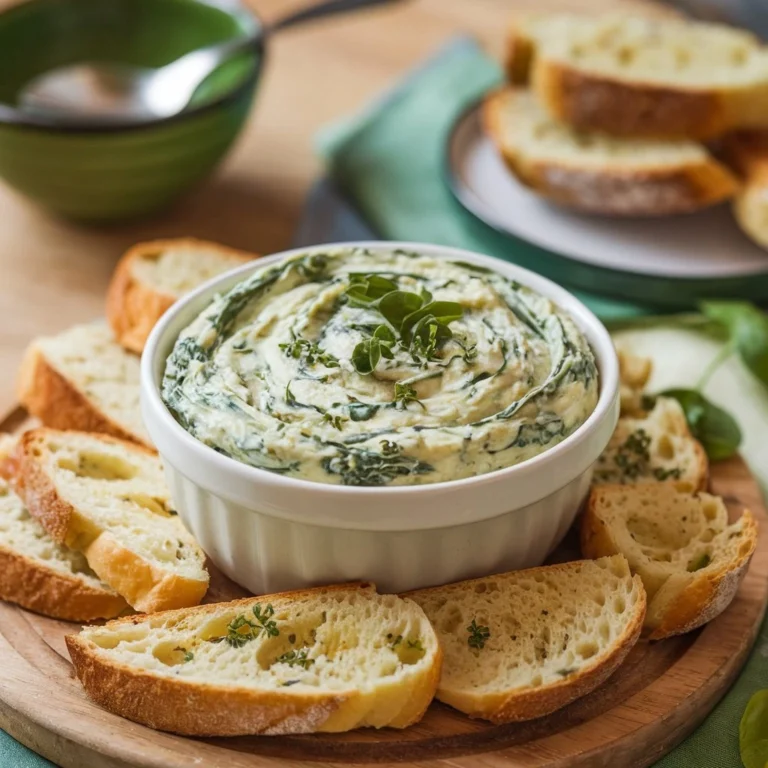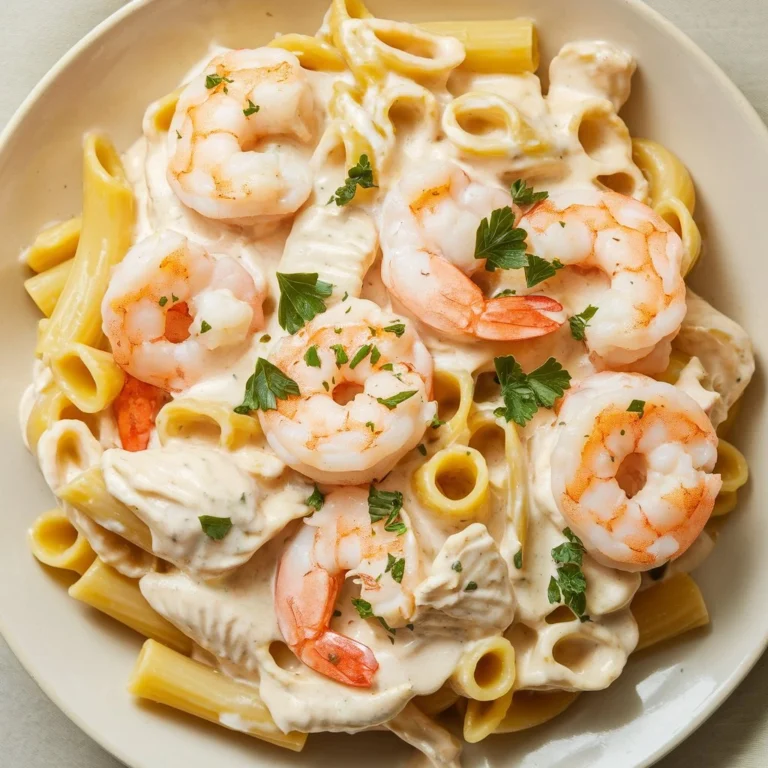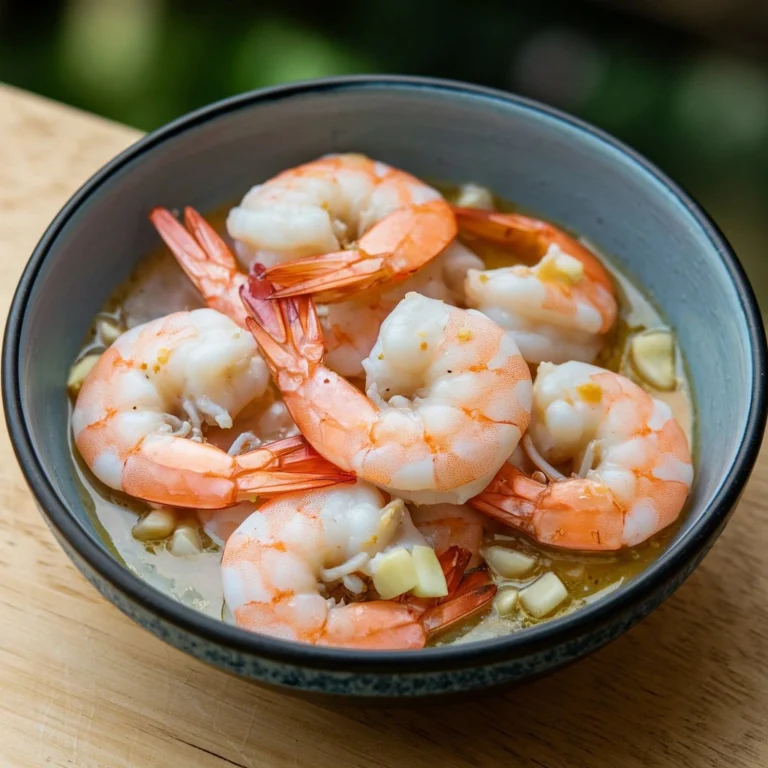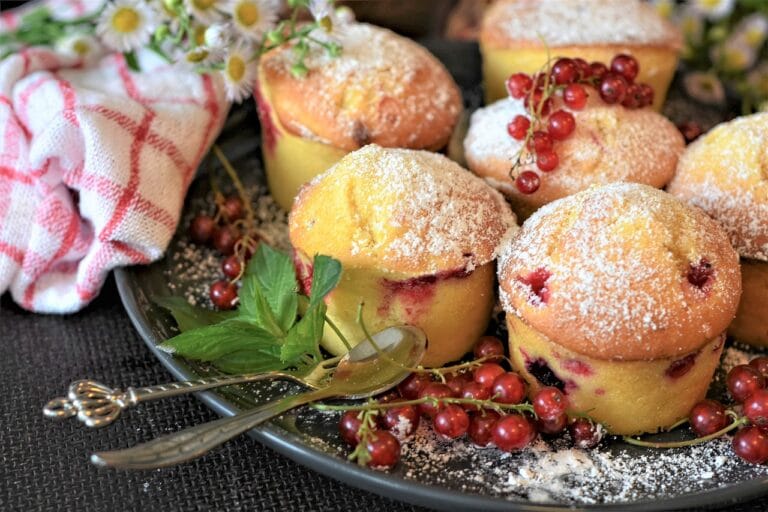The Effects of Adding Lemon Juice to Cream: A Simple Guide
Table of Contents
Ever wondered what happens when lemon juice meets cream? It’s a magical transformation that starts with curiosity. This mix can lead to amazing culinary creations, from desserts to sauces. The dance of acidity and fat is truly fascinating.
Adding lemon juice to cream isn’t simple. It’s a delicate balance that can surprise you. Knowing the science behind it helps you make smooth sauces and creamy desserts that wow everyone.
Whether you’re making lemon posset or trying new recipes, understanding this mix is key. This guide will explore the chemistry, potential issues, and techniques that make these ingredients versatile.
Key Takeaways
- Lemon juice can dramatically change cream’s texture and consistency
- Temperature and acidity play crucial roles in dairy reactions
- Proper technique prevents unwanted curdling
- Understanding chemical interactions enhances culinary skills
- Lemon juice can be used to thicken and flavor cream-based dishes
Understanding the Chemistry Between Lemon Juice and Cream
Exploring culinary chemistry, we find a complex dance between lemon juice and cream. It’s all about how acidic ingredients change dairy products.
The pH levels are key in this process. Lemon juice has a pH of 2.0 to 2.5. Cream’s pH is about 6.5 to 7.0. Together, they create a chemical reaction that can cause curdling.
The Science of Protein Denaturation
Curdling happens when cream’s proteins change shape in an acidic environment. This change causes them to clump and separate.
- Acidic ingredients destabilize protein structures
- Temperature impacts protein reaction rates
- Protein bonds restructure when exposed to low pH levels
Factors Influencing Chemical Interactions
Your experiment depends on several important factors:
- Acid concentration in lemon juice
- Cream fat content
- Mixing temperature
- Mixing technique
Knowing these details helps you control and predict changes in dairy in your kitchen.
Essential Ingredients for Perfect Lemon Cream Combinations
Creating amazing lemon cream dishes starts with top-notch ingredients. Your cooking will stand out when you pick the best parts. Each ingredient plays a key role in making the lemon cream taste and feel great.
- Heavy Whipping Cream: Choose cream with at least 36% milk fat for the richest texture
- Fresh Lemons: Use freshly squeezed juice and zest for the best flavor
- High-Quality Sugar: Pick fine granulated or powdered sugar for smooth mixing
Here are some tips for picking ingredients:
- Go for organic lemons for brighter zest and juice
- Check the expiration date to ensure cream freshness
- Use room temperature ingredients for easier mixing
When mixing these ingredients, temperature and timing matter a lot. Keep your cream cold and lemons at room temperature. This way, you get the most juice and zest. Chefs say using a microplane grater is best for zesting to get the most lemon flavor.
By carefully choosing and preparing your ingredients, you’ll make lemon cream that tastes great and looks good. The right ingredients turn simple recipes into amazing dishes.
What Happens When You Add Lemon Juice to Cream
Adding lemon juice to cream is a fascinating process. It changes the texture and taste of your dish in amazing ways. Knowing how these two ingredients react can help you make your recipes better.
Immediate Reactions to Watch For
When lemon juice meets cream, proteins start to move. This can result in two main things: a smooth mix or curdling. Curdling occurs when the acid in lemon juice breaks down protein structures, causing them to clump.
- Protein denaturation begins immediately
- Cream’s fat content influences reaction speed
- Acidity level determines curdling intensity
Time and Temperature Factors
Temperature is key when mixing lemon juice with cream. Cold temperatures slow down protein breakdown. But, warmer temperatures speed up the reaction.
| Temperature Range | Reaction Intensity |
|---|---|
| Below 40°F | Minimal protein separation |
| 40-70°F | Moderate protein interaction |
| Above 70°F | Rapid curdling potential |
Visual Cues of Curdling
Knowing when curdling happens is important. Look out for:
- Small protein clumps forming
- Liquid separation
- Grainy texture emerging
Pro tip: Thickening cream before adding lemon juice can minimize unexpected curdling.
Understanding these chemical reactions lets you control cream and lemon juice. This way, you can achieve the perfect results in your cooking.
Preventing Unwanted Curdling in Cream

Mastering the art of mixing cream and lemon juice is all about preparation. To avoid curdling, you need to understand dairy chemistry. The right recipe tips can keep your dish smooth and creamy.
Here are some key strategies to stop cream from curdling:
- Gradually warm the cream to stabilize its protein structure
- Use full-fat cream with higher protein content
- Add lemon juice slowly while continuously stirring
- Maintain consistent temperature between 60-70°F
Keeping the temperature right is crucial when working with dairy. Thickening cream before adding acidic ingredients helps prevent protein separation. Chefs suggest warming the cream slowly and adding lemon juice bit by bit.
Here are some recipe tips for mixing cream and lemon:
- Start with room-temperature ingredients
- Use a whisk to mix lemon juice smoothly
- Consider using stabilizers like cornstarch
- Keep an eye on the mixture’s consistency
By using these techniques, you can turn potential problems into creamy delights. Your dishes will impress everyone.
Proper Techniques for Combining Lemon and Cream
Mastering the art of mixing lemon and cream needs precision and careful techniques. The mix of acidic lemon juice and creamy dairy requires specific tips for perfect results.
Creating a smooth lemon cream involves understanding the chemistry between ingredients. Success depends on careful preparation and specific mixing methods.
Step-by-Step Mixing Methods
- Start with room temperature ingredients for best blending
- Use a clean, chilled mixing bowl to avoid early separation
- Add lemon juice slowly while stirring constantly
- Whisk gently to mix ingredients smoothly
Temperature Control Tips
Temperature is key to avoid cream curdling. Chilling your tools before mixing can greatly help.
- Chill bowl and beaters for 15 minutes before mixing
- Keep a cool temperature around 40-45°F
- Use an instant-read thermometer to check temperatures
Equipment Recommendations
Choosing the right tools can improve your cooking and ensure lemon cream success.
- Stainless steel whisk for smooth mixing
- High-quality glass or ceramic bowls
- Silicone spatula for scraping sides
- Electric mixer with adjustable speeds
Remember, patience and gentle handling are crucial for a perfect lemon cream. It should be delicious and look great too.
Common Mistakes to Avoid When Adding Citrus to Dairy
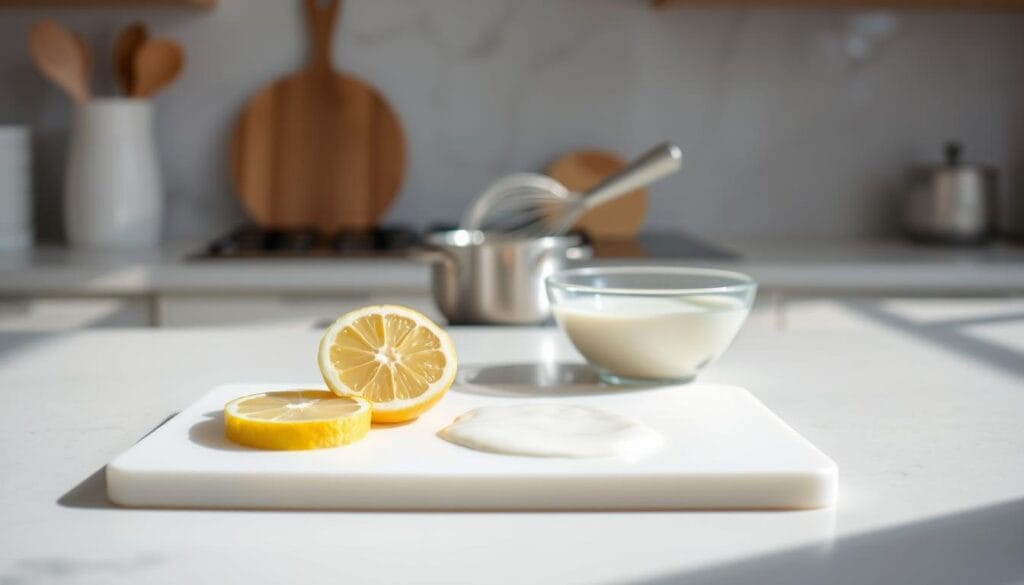
Working with acidic ingredients like lemon juice and dairy products needs careful technique. Many home cooks accidentally curdle cream or milk by making simple mistakes during preparation.
Understanding the chemistry between citrus and dairy helps prevent unwanted texture changes. Dairy products with higher fat content, such as heavy cream, are more stable when mixed with acidic ingredients.
- Avoid adding lemon juice too quickly to cream
- Control the temperature of your ingredients
- Use gentle mixing techniques
- Select dairy products with higher fat content
Recipe tips for successful citrus and dairy combinations include:
- Slowly incorporate acidic ingredients
- Whisk continuously while adding lemon juice
- Keep ingredients at similar temperatures
- Use room temperature cream for best results
Understanding fat content matters significantly. Whipping cream and heavy cream are less likely to separate compared to low-fat milk alternatives. Restaurants typically use heavy cream because it maintains stability during heating.
| Dairy Product | Curdling Risk | Fat Content |
|---|---|---|
| Whole Milk | Medium | 3.25% |
| 2% Milk | High | 2% |
| Heavy Cream | Low | 36-40% |
Professional chefs recommend tempering ingredients by gradually introducing acidic components. This technique helps maintain smooth textures and prevents unexpected separation in your culinary creations.
Creative Culinary Applications
Lemon and cream are a great mix for cooking. They can make your dishes, from desserts to drinks, taste amazing. They are perfect for both home cooks and chefs.
Delightful Dessert Recipes
Find out how to make sweet treats with lemon and cream. Here are some ideas:
- Lemon Blueberry Mousse Cake: A hit at summer parties
- Lemon Meringue Cheesecake: A fancy dessert
- Lemon Icebox Pie: A cool treat
- Lemon Shortbread Cookies: A twist on a classic
Savory Culinary Innovations
Use lemon and cream to make savory dishes better. Try these ideas:
- Creamy lemon chicken sauces
- Lemon-infused pasta dishes
- Seafood recipes with citrus cream reductions
- Vegetable gratins with zesty cream
Refreshing Beverage Ideas
Make your drinks better with lemon and cream. Here are some ideas:
- Lemon Cream Cocktails
- Smoothies with lemon and cream base
- Chilled summer drink variations
- Creamy citrus mocktails
Using lemon and cream in cooking opens up a world of possibilities. It’s a great way to get creative in the kitchen.
Conclusion
Learning about adding lemon juice to cream opens up a world of culinary fun. You now know how to mix simple ingredients into amazing dishes. This knowledge lets you cook with confidence and skill.
Every time you try something new in the kitchen, you learn something. By controlling temperature, acidity, and mixing, you can make smooth sauces and tangy desserts. You can also create unique recipes that highlight the perfect mix of lemon and cream.
Your cooking skills will keep growing as you dive into food science. Whether you’re cooking at home or dreaming of being a chef, understanding the chemistry of lemon and cream will make your dishes more creative and flavorful.
We encourage you to keep experimenting, learning, and sharing what you find. Your kitchen is a place to explore flavors and apply what you’ve learned. Every dish is a chance to use the culinary chemistry you’ve discovered.
FAQ
Why does cream curdle when lemon juice is added?
Adding lemon juice to cream changes its pH. This makes the milk proteins (casein) clump. The acidity of lemon juice disrupts the proteins, causing the cream to separate into curds.
Can I prevent cream from curdling when using lemon juice?
Yes, you can avoid curdling. Start by adding lemon juice slowly. Use room temperature ingredients and control the mixing temperature. Whisking can also help keep the cream smooth.
Is curdled cream always a bad thing?
No, it’s not always bad. In some recipes, like cheese or lemon posset, curdling is wanted. It’s all about knowing how to control it for your recipe.
What type of cream works best with lemon juice?
Heavy or whipping cream is best. They have more fat, making them less likely to curdle. This results in a richer, smoother mix with acidic ingredients.
How quickly does cream curdle when lemon juice is added?
Curdling can happen fast, almost instantly. It depends on the cream’s temperature, lemon juice amount, and the dairy type. pH and protein levels also affect how quickly it happens.
Are there any culinary uses for lemon-curdled cream?
Yes! Curdled cream is great for homemade ricotta, lemon posset, and tangy sauces or dressings. It’s all about knowing how to use it.
Does the temperature of ingredients affect curdling?
Yes, temperature matters a lot. Cold ingredients curdle quickly, while room temperature or warmed cream mix better with lemon juice. Keep temperatures consistent for the best results.
Can I use other acidic ingredients instead of lemon juice?
Yes, you can use vinegar, lime juice, or buttermilk too. They all cause protein separation but have different tastes and effects.
Source Links
- Lemon Whipped Cream – https://stateofdinner.com/lemon-whipped-cream/
- Easy Lemon Posset – https://www.savingdessert.com/easy-lemon-posset/
- The Science of Mixology | Cocktail Courier – https://www.cocktailcourier.com/blogs/science-of-mixology
- Lemon Zucchini Cupcakes – https://www.bunsenburnerbakery.com/lemon-zucchini-cupcakes/
- Easy Lemon Cream Pie – https://southernbite.com/easy-lemon-cream-pie/
- Fresh Lemon Cake w/ Lemon Cream Frosting – https://divascancook.com/lemon-cake-recipe/
- Creamy Lemon Posset – Days of Jay – https://daysofjay.com/2024/06/21/creamy-lemon-posset/
- Lemon Whipped Cream Recipe – https://deesweets.com/lemon-whipped-cream/
- Thicken Your Pasta’s Cream Sauce With One Staple Fruit – The Daily Meal – https://www.thedailymeal.com/1565659/lemon-juice-thickens-cream-sauce/
- Lemon Cream Recipe: Zesty and Creamy Delight – https://www.cookist.com/lemon-cream-recipe-zesty-and-creamy-delight/
- Homemade Lemon Curd Ice Cream – Recipe — ICE CREAM SCIENCE – https://www.icecreamscience.com/blog/lemon-curd-ice-cream-recipe
- Creamy Lemon Pasta – https://thecleaneatingcouple.com/creamy-lemon-pasta/
- Lemon Crème Fraîche Recipe – All Recipes | Sweet New Roots – https://sweetnewroots.com/lemon-creme-fraiche/
- Simple Creamy Lemon Posset Recipe – Gluten Free Homestead – https://glutenfreehomestead.com/2024/07/lemon-posset-recipe/
- Read Our Helpful Guide On Preventing Your Milk From Curdling When Cooking – https://www.thespruceeats.com/prevent-milk-from-curdling-when-cooking-996067
- Recipes, Culinary Techniques, Gallery, Blog — Teaching Table – https://www.teachingtable.net/blog
- One Skillet Lemon Garlic Chicken Recipe | Little Spice Jar – https://littlespicejar.com/one-skillet-chicken-with-lemon-garlic-cream-sauce/
- Pasta With Lemon Cream Sauce – https://longbournfarm.com/spaghetti-lemon-cream-sauce/
- These 35 Lemon Desserts Have Made Sour Taste So Sweet – https://www.delish.com/cooking/g1538/lemon-desserts/
- 35 Sweet and Savory Recipes Using Lemon – https://www.tasteofhome.com/collection/lemon-recipes-from-tart-to-sweet-2/?srsltid=AfmBOorCerTHOQ6Oxp3SXD_0wRIJM086WQ8tp2uh-oolA9VtkzNVm1Yf
- Lemon Cream Cheese Squares – Tangy and Creamy Dessert Bars – Recipes by Clare – https://recipesbyclare.com/recipes/lemon-cream-cheese-squares
- Luscious Lemon Cheesecake – Creamy and Refreshing – Recipes by Clare – https://recipesbyclare.com/recipes/luscious-lemon-cheesecake



